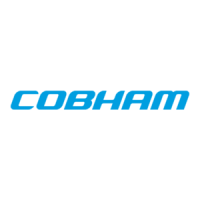SECTION 2 – INSTALLATION
2.1 General
This section contains suggestions and factors to consider before installing the CVC-151. Close
adherence to these suggestions will assure a more satisfactory performance from the equipment.
2.2 Unpacking and Inspecting Equipment
Exercise care when unpacking the equipment. Make a visual inspection of the units for evidence of
damage incurred during shipment. If a claim for damage is to be made, save the shipping container to
substantiate the claim. The claim should be promptly filed with the transportation company. It would be
advisable to retain the container and packaging material after all equipment has been removed in the
event that equipment storage or reshipment should become necessary.
2.3 Equipment Installation
The CVC-151 installation will conform to standards designated by the customer, installing agency, and
existing conditions as to the unit location and type of installation. See Figure 2-2 for an outline drawing of
the equipment. Before beginning installation the installer should review the drawings, electrical interwiring
diagram and installation pictorials which are located in this section, and establish requirements to a
particular aircraft.
A. Cooling Considerations
The greatest single contributor to increased reliability of all modern day avionics is reducing the
maximum operating temperature of the individual units. While modern day circuit designs consume
far less electrical energy, the watts per cubic inch dissipated within the avionics units still remains
much the same due to high density packaging techniques utilized. Consequently, the importance of
providing avionics cooling is essential to the life span of the unit.
While each individual unit may not require forced air cooling, the combined heat load of several
units operating in a typical avionics location will significantly degrade the reliability of the avionics if
provisions for cooling are not incorporated in the initial installation. Failure to provide cooling will
certainly lead to increased avionics maintenance costs and may void the Wulfsberg warranty.
B. CVC-151 Mechanical Installation
(1) Select the CVC-151 mounting location. The location should be free from excessive moisture,
vibration, heat and noise generating sources. The unit can be rigidly mounted. Allow at least
one inch of free air space around the top and rear of the unit and one-half inch along each
side. Allow adequate space for installation of cables and connectors.
(2) Refer to Figures 2-2 to 2-3 for the CVC-151 mounting dimensions.
(3) Mark, punch, and drill the mounting holes. Care must be taken to avoid damage to adjacent
equipment or cables.
(4) Secure the mounting tray firmly in place.
(5) Secure the CVC-151 to the mounting tray.
The document reference is online, please check the correspondence between the online documentation and the printed version.

